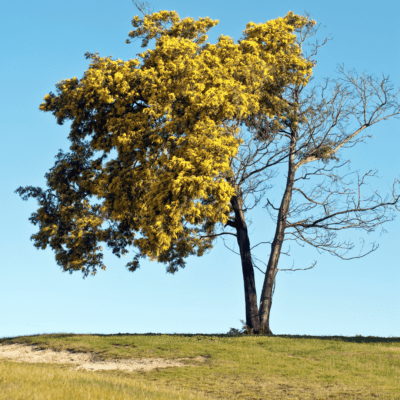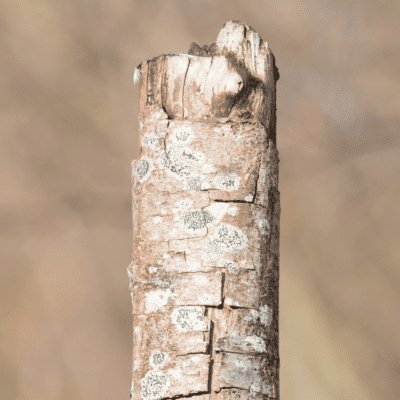8 Signs That Your Tree Is Dying
There are many reasons that you don’t want a dead tree in your yard especially if it is close to your home. You should take time each season to examine the health of all of the trees, especially the ones that are close to your home because they can end up being a safety hazard to your family.
OSHA says that trees are more dangerous than sharks in terms of how much damage they do… kinda scary if you look out your window and see how many trees surround your home. But it’s true, more people are victims of trees falling on them than shark attacks.
Knowing how to identify if your tree is sick or dying can help you avoid a tree catastrophe on your property. Below are a few things that you should be aware of if you have trees in your yard and near your home. The signs of a sick tree are usually pretty obvious once you know how to identify them.
- There are broken sticks all over the ground around the tree. Healthy trees tend to have flexible branches and twigs so if branches are easily breaking off of the tree it is a pretty sure sign that the tree is not healthy. If there are broken branches on the ground from the tree, then you should call a local specialist to come do an inspection and give guidence.
- The bark is shedding off of the tree. If the bark is flaking or peeling off the tree then it’s a sign that it’s not getting enough nutrients. A tree’s bark is like a human’s skin. Skin problems in humans can give clues about underlying illnesses, just like the condition of tree bark can be a sign of disease in the tree. You may be able to save the tree by watering the bare spots and taping the tree bark back on until it re-attaches. If the bark loss is from an infection in the tree then you will need to cut the tree down before the infection spreads to other trees in your area.
- Rot or fungus is visible on the tree. Signs of rotting or fungus are always bad news. If you can see either one, you need to act on it immediately if you want any chance of saving the tree. If the damage is already done though, saving the tree will be pretty much impossible. Some treatments are available for rot and fungus but if the tree is already too far gone or if there is a chance that the fungus may spread then the tree will need to be removed so that it doesn’t harm surrounding trees.
- The tree is no longer standing up straight. Unless the tree was grown at an angle on purpose, a tree should really not be leaning over. A tree may start to keel over if the roots are starting to die or are damaged. You may be able to brace the tree to keep it from falling all the way over, but you most likely won’t be able to save the tree.
- Open wounds. Trees can start to die if wounds are not cared for properly. Unlike cuts that are carefully done to trim the tree back, if a tree has torn branches or splits it can be very difficult for a tree to recover. Midwest storms that have high winds and lightning strikes that hit trees can easily cause damage to trees. If large branches fall off, the tree has a small chance of surviving.
- No leaves or dead leaves. This one is a pretty obvious sign that a tree is sick or dying. If there are some bare branches on one side of a tree but not the other, it could be an indication of root damage or that disease or pests have invaded the tree. If a tree has dead leaves it is a sign that something is disturbing the flow of nutrients on that side of the tree. In most cases the damage is already done and you should replace the tree.
- Termites and other pests. Trees are susceptible to many different kinds of pests. Beetles, ants and termites are just a few that can invade a healthy tree and cause many different problems. If you catch them early enough, you may be able to get rid of them and save the tree. If the tree’s stability has been compromised by the damage from the pests, it is probably best to take the tree down and replace it.
- Root damage. If a tree experiences root damage, it can die. Sometimes new building construction or landscaping projects can injure tree roots. If a tree’s roots are cut back too much, the tree will struggle to feed itself. If you have had recent construction near your property and notice a tree showing signs of root damage, call an expert arborist right away to come examine and give guidance.
What to do if you see signs of a sick or dying tree…
If you suspect that you have a sick or dead tree on your property, take action on it now. Don’t wait for it to get worse… remember, you have a higher chance of dying by a tree than a shark attack.
After talking with an arborist, if the tree needs to be removed then you should call a tree removal company to remove the tree as soon as possible. Talk with the arborist about if there would be a better type of tree to place in that area that may survive better then call your local nursery or tree farm to get a new one installed.
Locally grown trees from your local nursery are typically going to be more equipped to survive your location’s climate over a tree bought at a big box store. If you are in the midwest, consider coming to Frisella for your next tree. Our horticultural specialists will help you pick the perfect tree and we do also have delivery and installation services available.

